Australian artist Isaac Walter Jenner (1836–1902) painted Cape Chudleigh, Coast of Labrador in 1893 and reworked it in 1895 (illustrated). The grand history painting depicts the search led by British naval officer, hydrographer, and explorer Sir Edward Belcher (1799–1877) to rescue the ill-fated 1845 British expedition by Sir John Franklin (1786–1847) which set out to find the fabled Northwest Passage between the Atlantic and Pacific Oceans. The tragedy captured popular imagination during the nineteenth century.
Franklin’s two ships, the Terror and the Erebus, were last sighted by whalers in Baffin Bay just north of Cape Chudleigh, Canada. In 1852, Belcher led a search expedition, abandoned in 1854 after four of his five ships became icebound, he and most of his crew returned to England on the last ship, the North Star.
Franklin search expedition by Captain Edward Belcher 1852

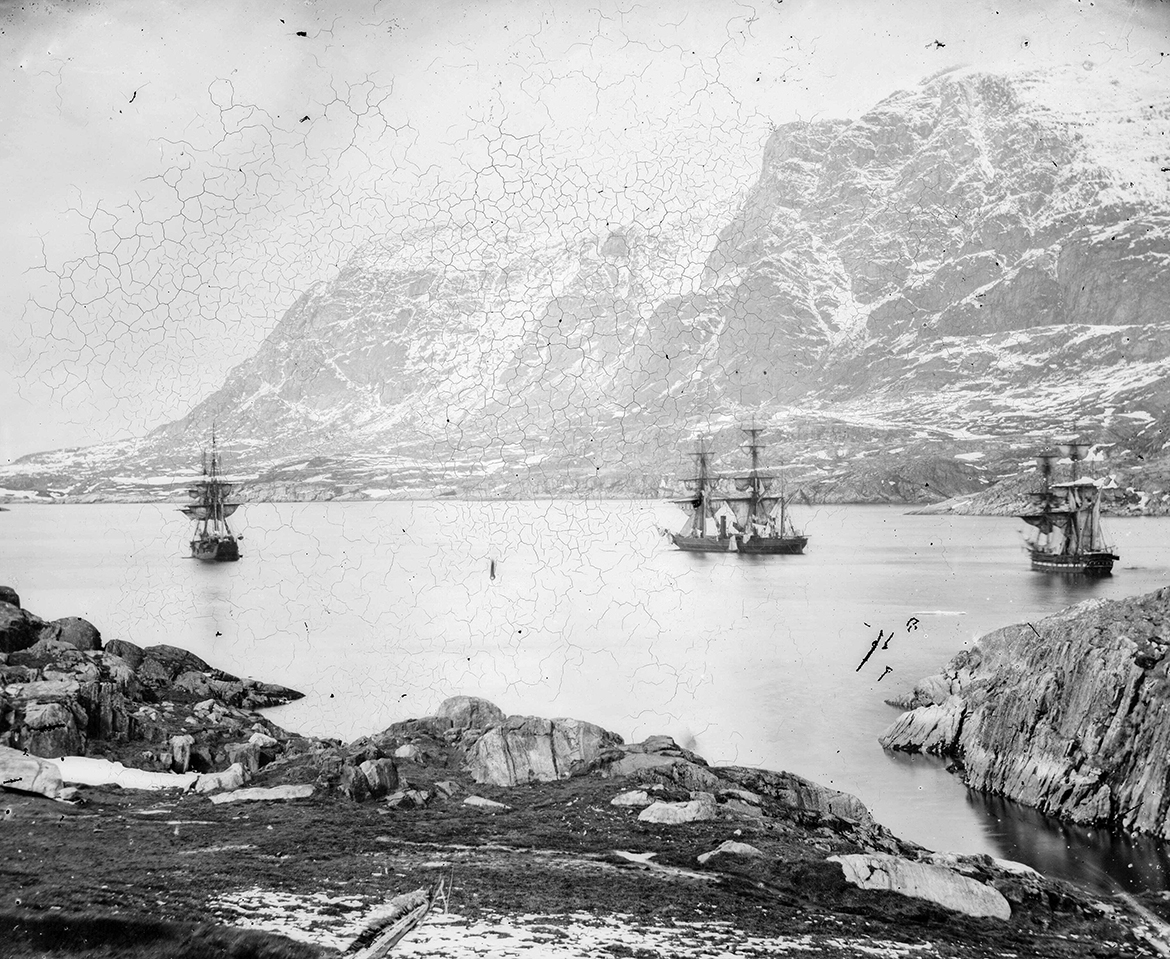
Regardless of the paintings subject matter being of historical significance, and the importance of the work to the Queensland Art Gallery’s founding Collection, of particular interest here are the birds that Jenner painted in the lower right portion of the painting (detail illustrated). As we are not that familiar with northern hemisphere seabirds, we welcome any help from twitchers and ornithologists to identify the array of birds depicted, or update us on our research.
Birds
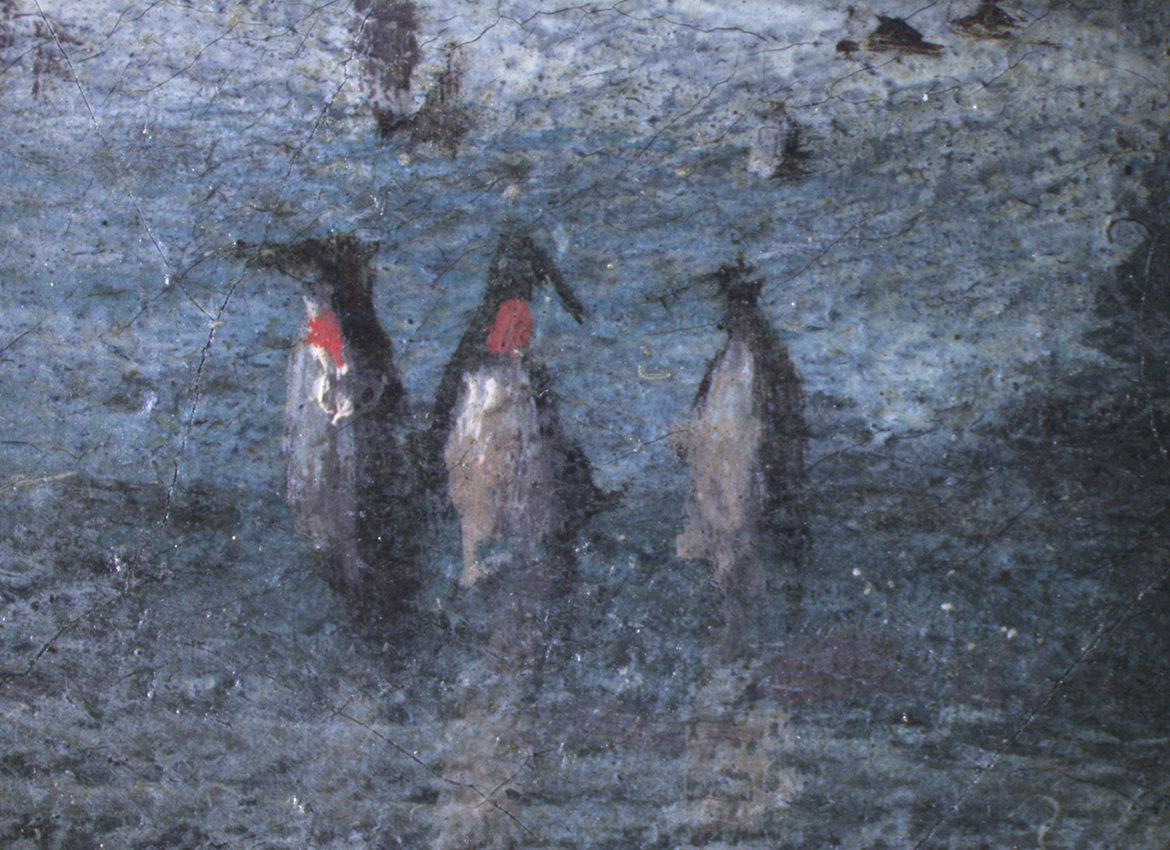
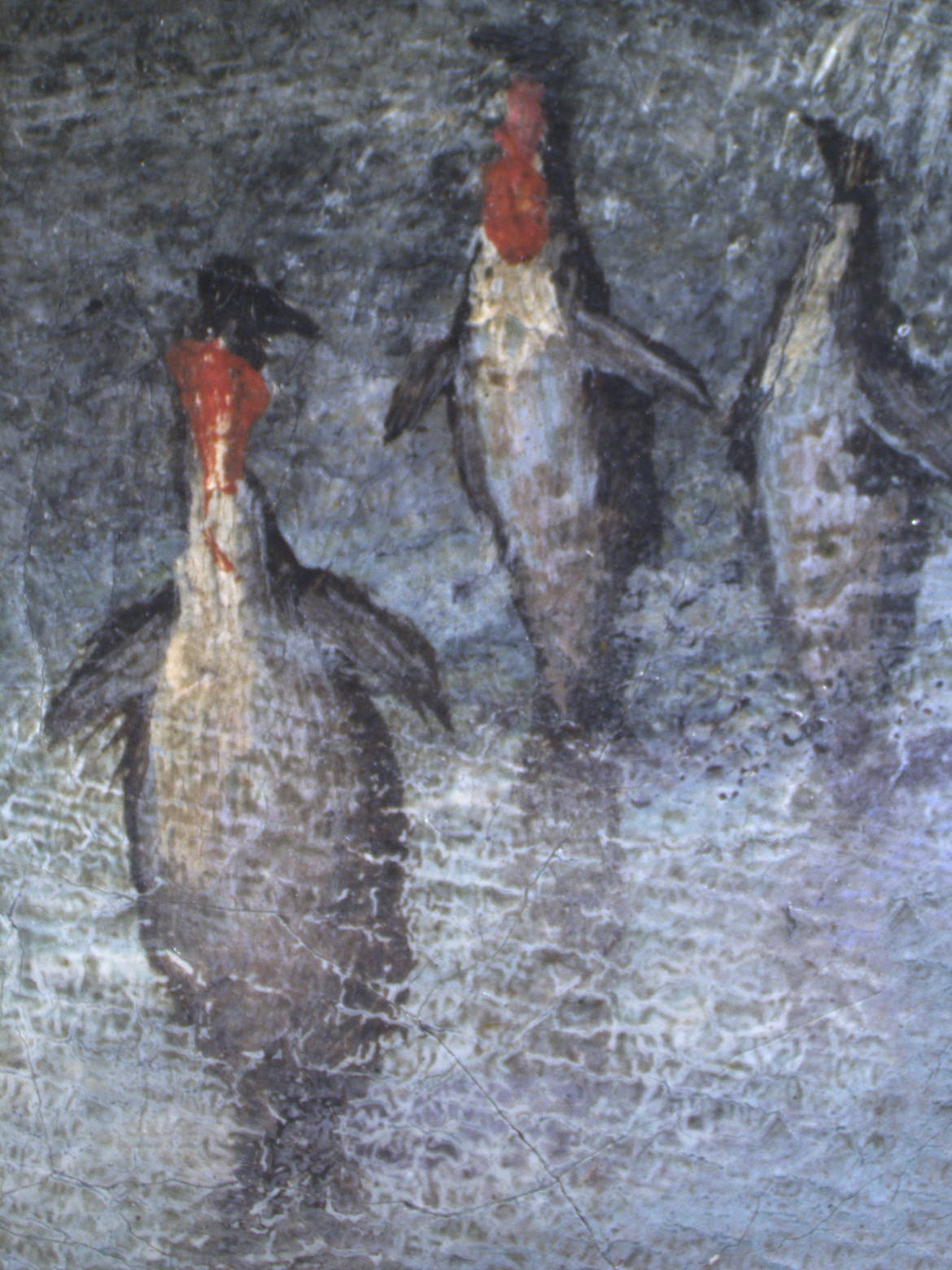
Detail highlighting birds
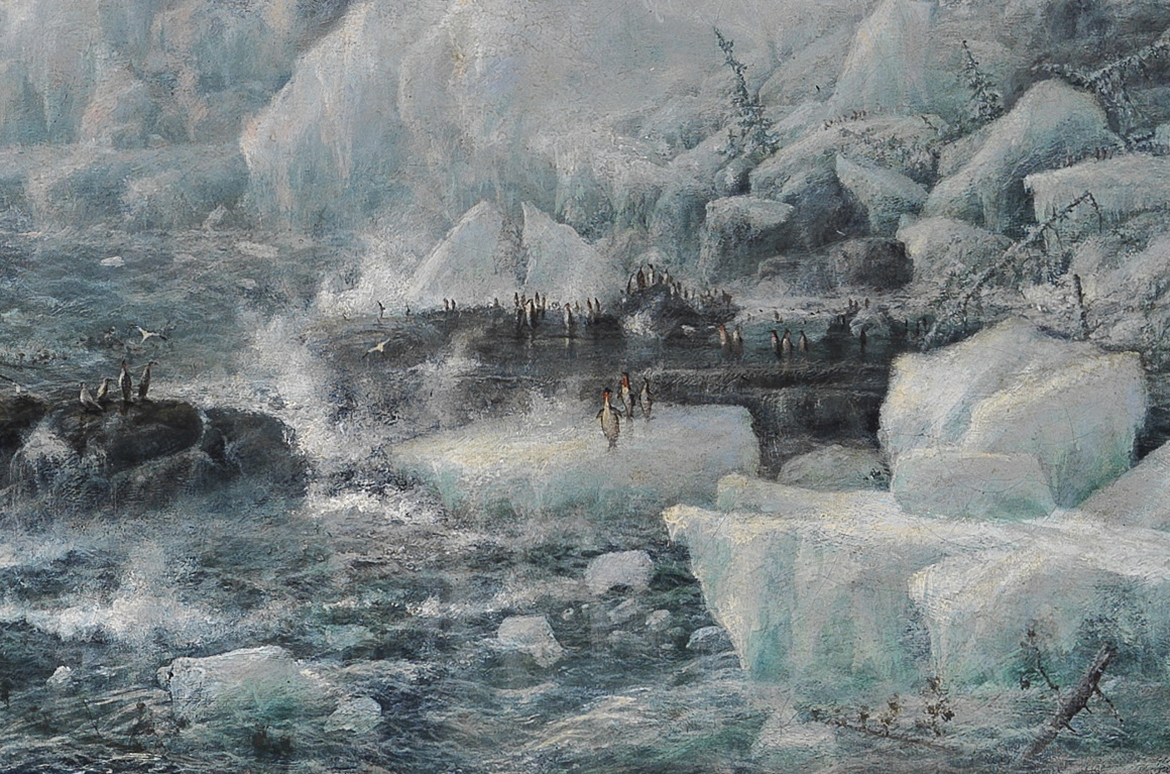
Cape Chudleigh, Coast of Labrador was first exhibited at the Queensland Art Society exhibition of 1893 as Cape Chudley, Labrador (illustrated). Jenner then reworked the painting before presenting it as a gift to the Queensland National Art Gallery in 1895.
Jenner’s forbidding seascape was one of three paintings donated to the Queensland National Art Gallery for its opening in 1895, the other two being R Godfrey Rivers’s Woolshed, New South Wales 1890 and Oscar Fristrom’s Duramboi 1893. Jenner explained in his letter of gift (illustrated) that the work concerned a search party led by Sir Edward Belcher that was sent to find the ill-fated 1845 expedition of Sir John Franklin.
Isaac Walter Jenner ‘Cape Chudley, Labrador’ 1893
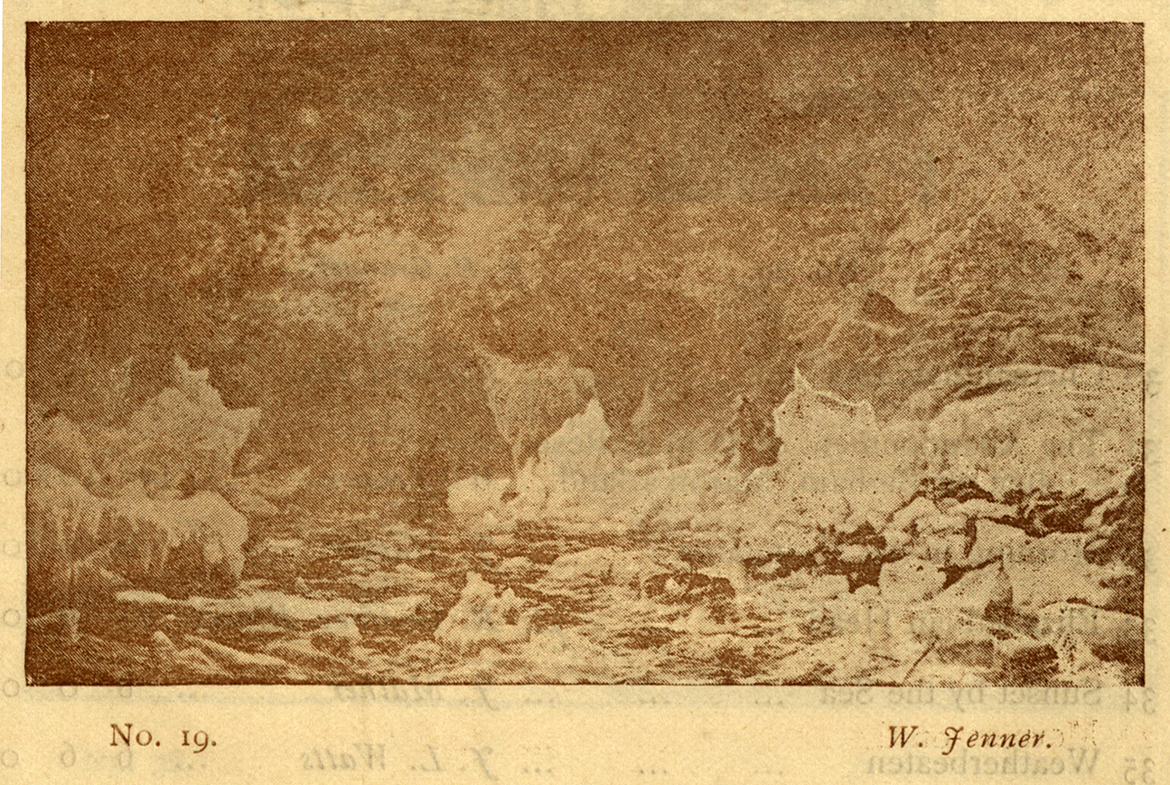
Royal Queensland Art Society exhibition catalogue 1893

Isaac Walter Jenner ‘Cape Chudleigh, Coast of Labrador’ reworked 1895
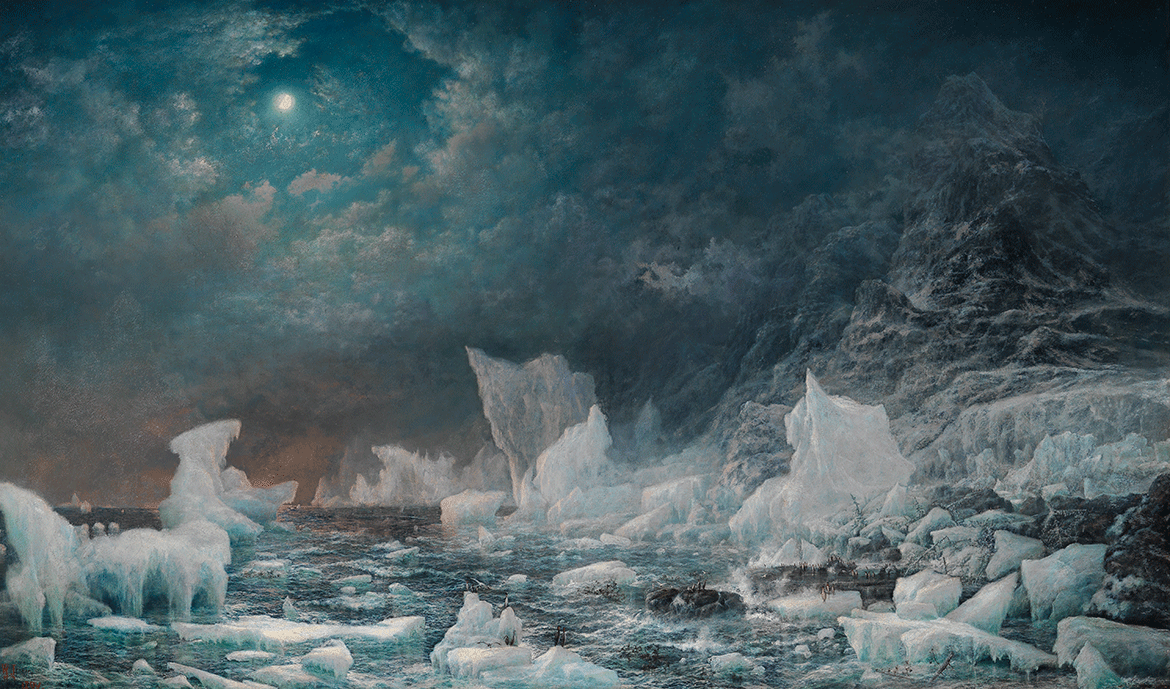
Letter from Isaac Walter Jenner to Queensland National Art Gallery 1895

Taringa April 1895
Honoured Sir
I am given to understand by my friend, Mr Godfry [Godfrey] Rivers that you are taking a great interest in the formation of the Queensland Fine Art Gallery…
I am desirous as the parent of the Art Society of Queensland to offer one of my works originally exhibited at our fifth Annual Exhibition (1893)…
This picture has historical interest as having been somewhat connected with an expedition sent in search of Sir John Franklin and on account of the singular manner of return to England of one ship of the Squadron after having been abandoned 16 months previously by Sir E Belcher.
This picture is now undergoing some alterations which I trust may be an improvement…
Letter from R Godfrey Rivers to Isaac Walter Jenner 1895
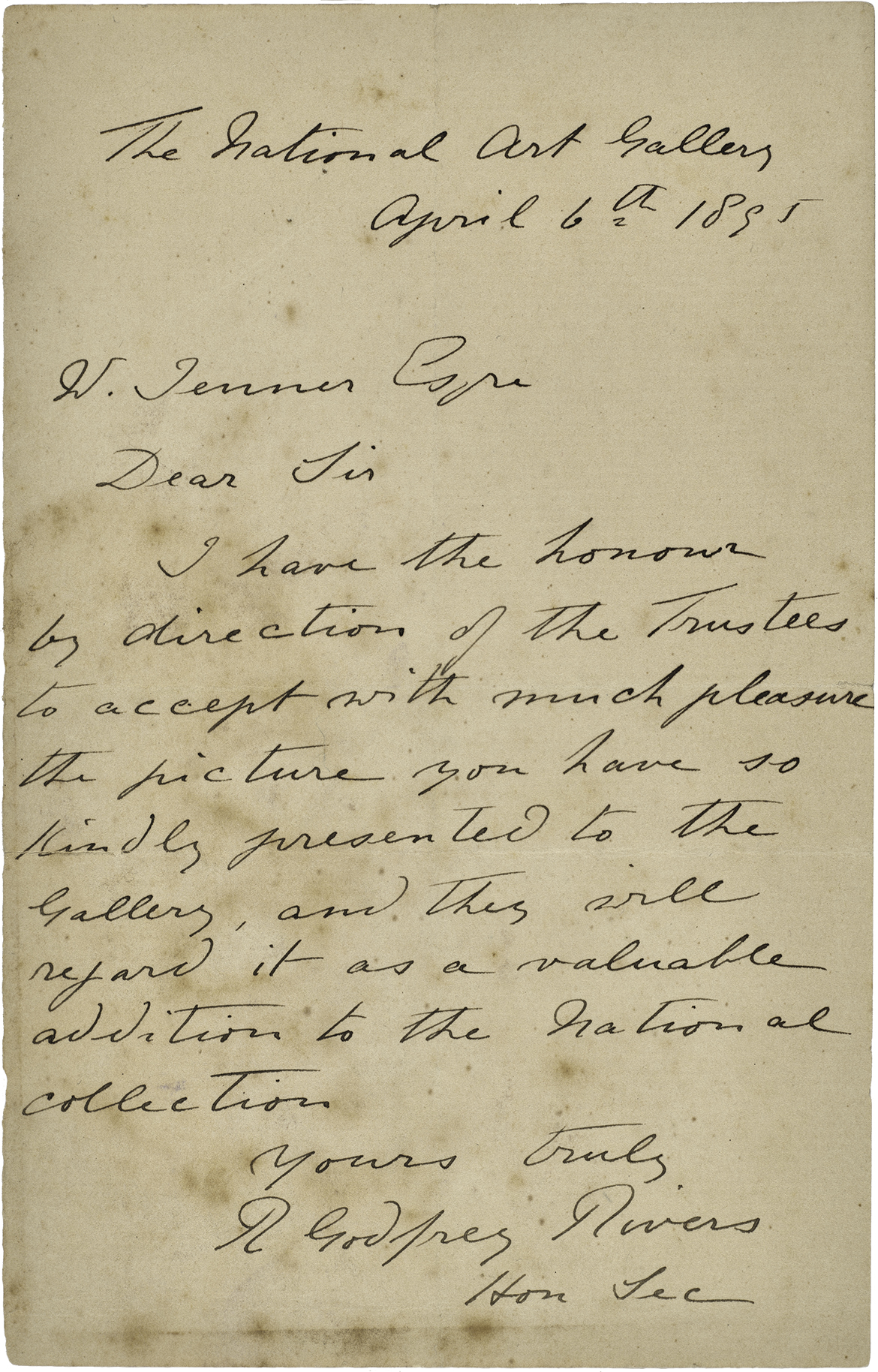
Cape Chudleigh (also known as Cape Chidley) in Canada is located on the short boundary between the province of Newfoundland and Labrador and the eastern shore of Killiniq Island. It forms the northernmost point of the Labrador Peninsula and is the southern entrance to the Hudson Strait.
The painting shows a moonlit arctic landscape with its maze of translucent sea ice. Debris from storm ravaged trees and possibly parts of shipwrecks (detail illustrated) are strewn across the foreground right and the scene is eerily lit by a bright orange glow on the horizon — thought most likely to be from a ship on fire in the distance behind the iceberg (detail illustrated). An editorial in The Queenslander ‘New Pictures at the National Gallery’ on 13 April 1895 reviewed Jenner’s Cape Chudleigh, Coast of Labrador.
The pictures presented last week to the Queensland National Gallery are now on view with the remainder of the Collection at the Town Hall, which already, it is interesting to note; bids fair to become a favourite Saturday afternoon resort of our citizens.
The picture presented by our well-known marine artist, Mr. Jenner, entitled “Cape Chudley, Labrador,” is an oil-painting representing the burning of a ship belonging to one of the Arctic expeditions in an inlet of the Polar seas. The glow of the flames and its reflections from beyond the icy promontory which hides the vessel tell the tale of disaster. The artist has enjoyed the rather uncommon advantage of being able to study Arctic scenery from Nature, as he visited the Arctic regions a number of years ago, when he was in the navy. The picture was shown at the Art Society’s exhibition in 1893, and found many admirers. It will always have a double interest, in the first place as the work and gift of an esteemed artist who was one of the earliest devotees of Art here, one of the first to kindle and most earnest to keep alive. her “sacred flame.” In the second place because of the undying interest men of English race must for ever feel in the tragic romance of the North-west Passage, and in the realm of perpetual frost.
Storm debris
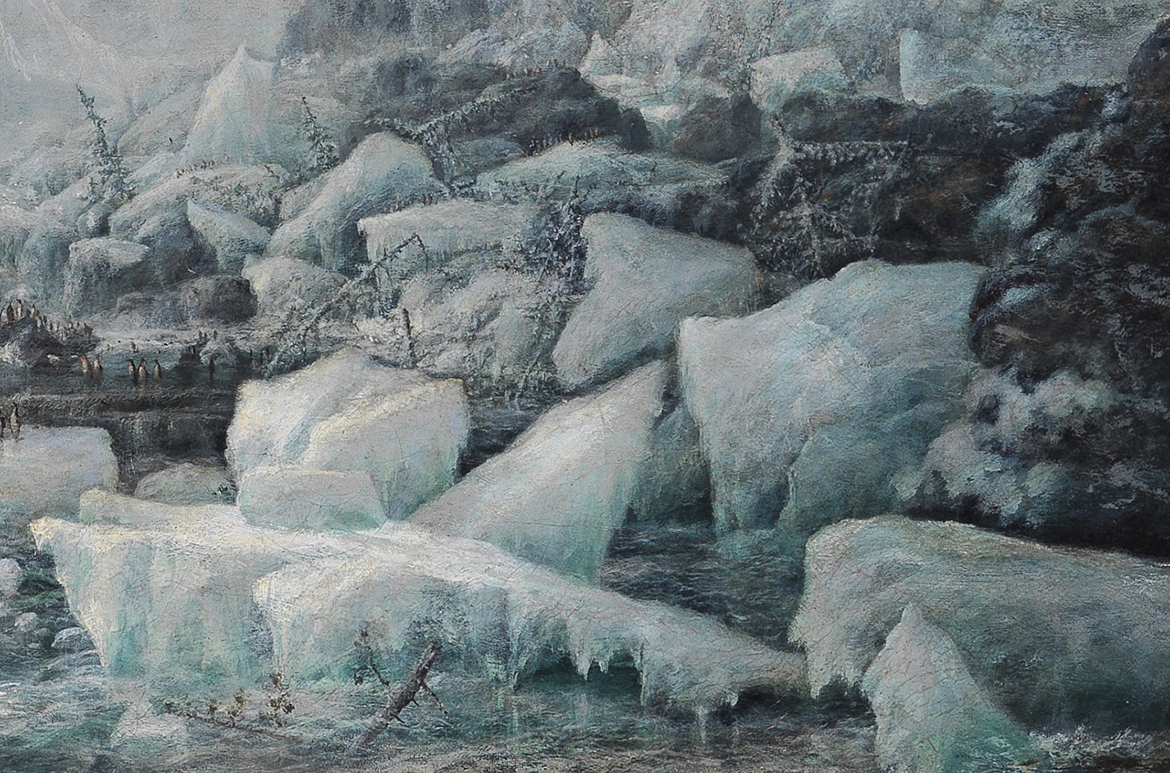
Glow on the horizon
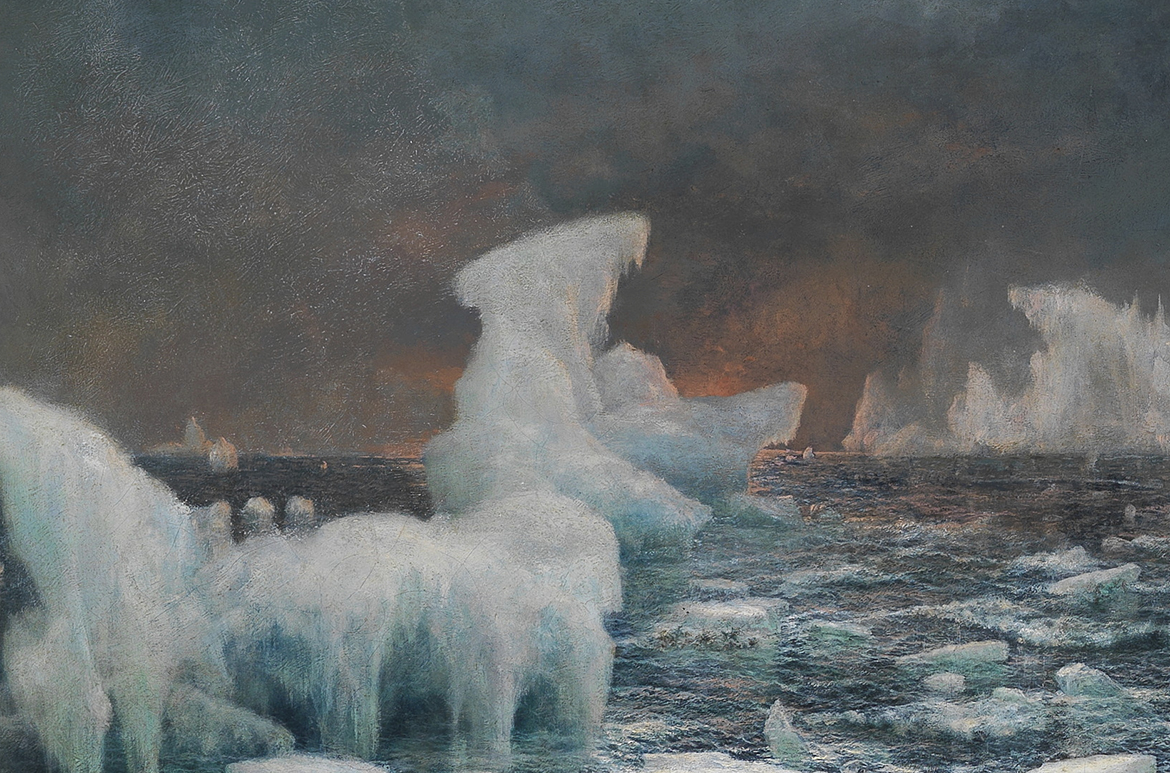
Contemporary views of the coast of Labrador
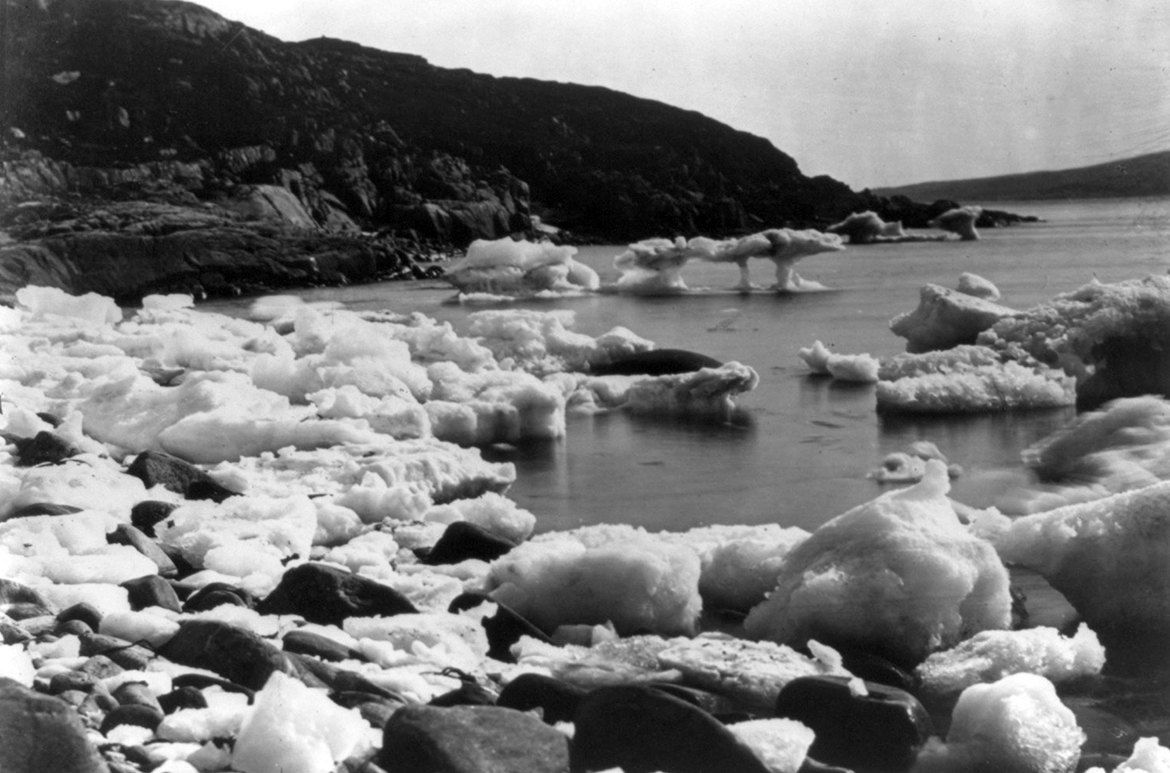
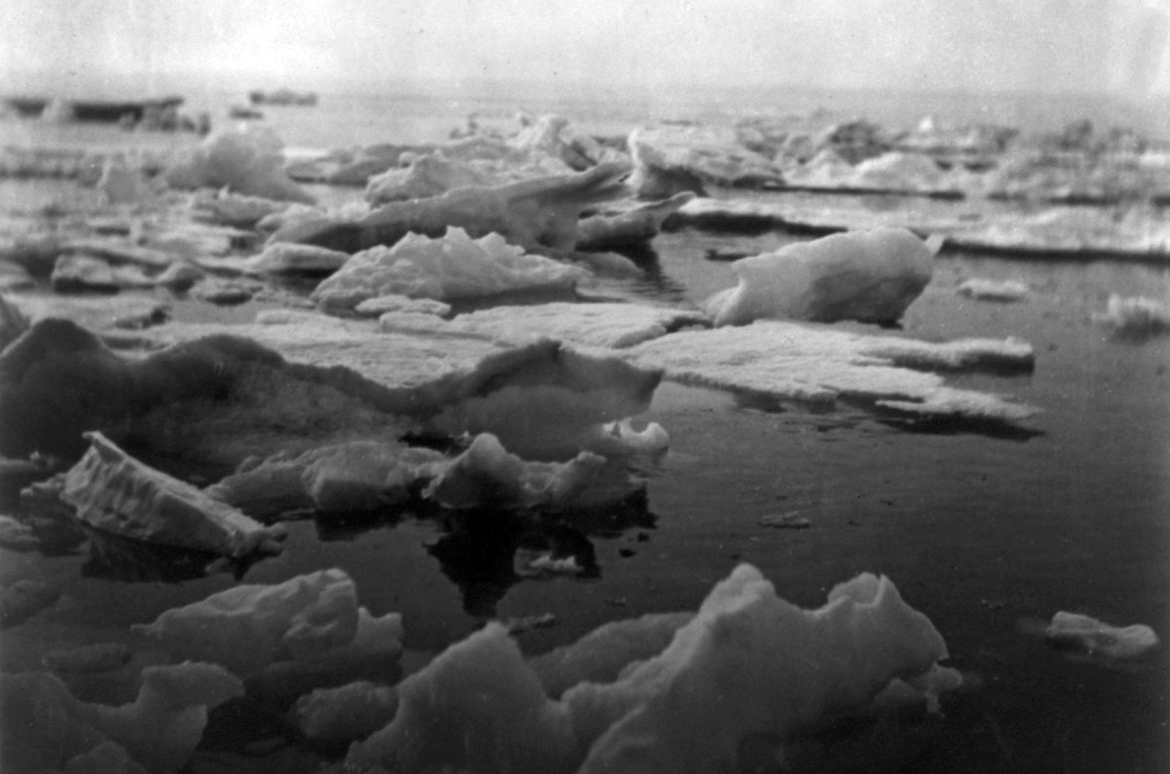

Cape Chudleigh, Coast of Labrador is different in style to Jenner’s smaller oil painted landscapes but is similar in paint handling to his larger historic seascapes such as The ‘Retribution’ at Balaclava during the Crimean War 1895 where both paintings have many layers of oil paint to produce the desired dramatic effect. The highly worked surface of Cape Chudleigh, Coast of Labrador could be the result of Jenner’s desire to replicate the various textures of the ocean and sea ice. We do know that he reworked the painting, and that he spent time constructing the scene based on his own recollections of an arctic voyage he had taken in the early 1850s as a young man on ‘a voyage to Lapland, Nova Zembla and Spitzbergen’,1 and accounts of Belcher’s journey recorded fifty years before the painting was made.
It is also interesting to note that Jenner has signed the painting in the bottom left corner — in a grand manner fitting the painting — with the treatment of his name as a three-dimensional feature with the text reflecting off the icy water (details illustrated).
Artist signature & date
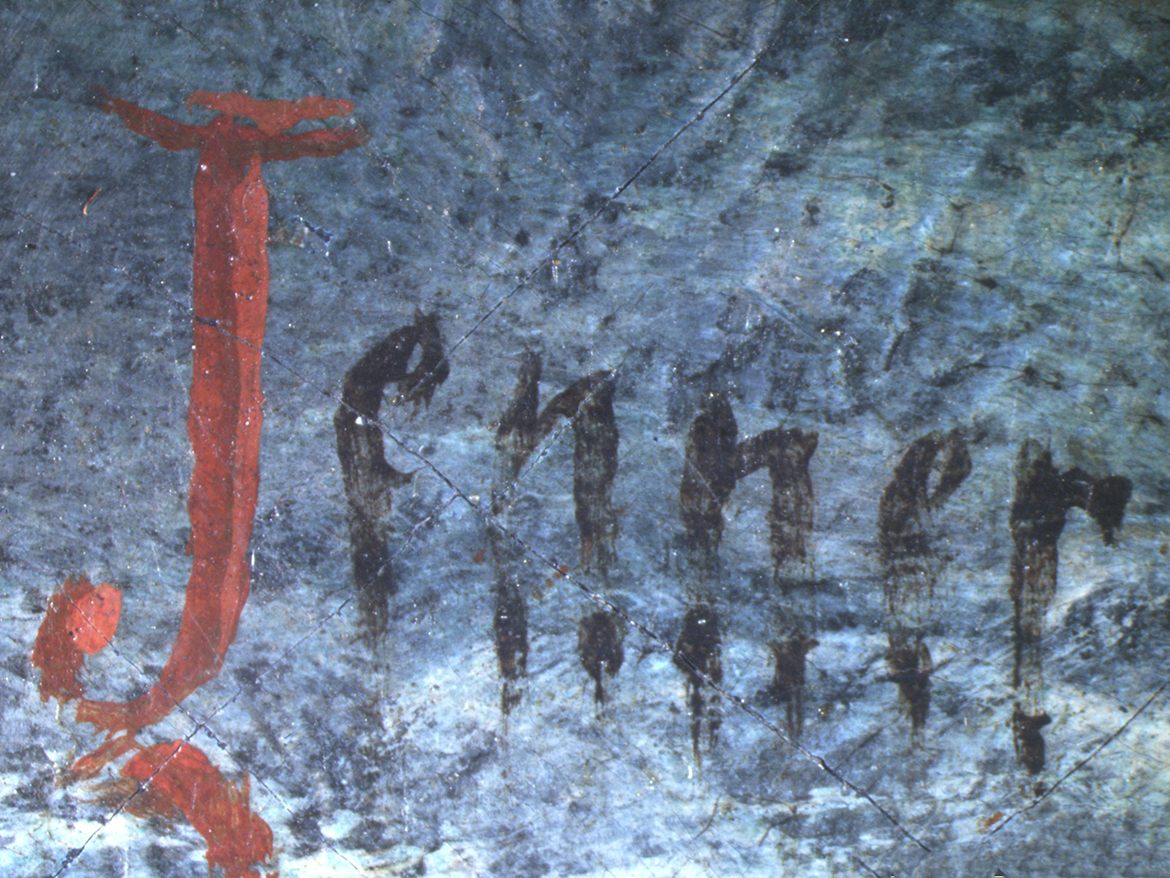
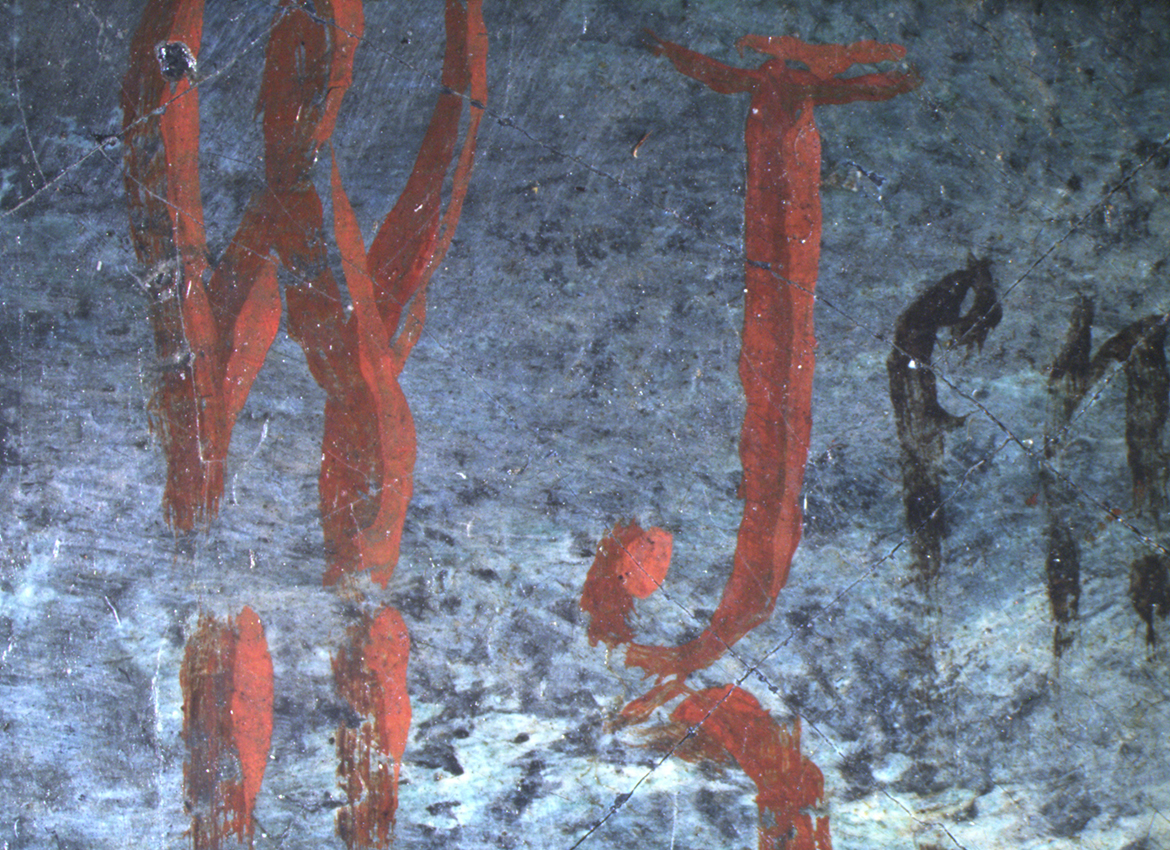
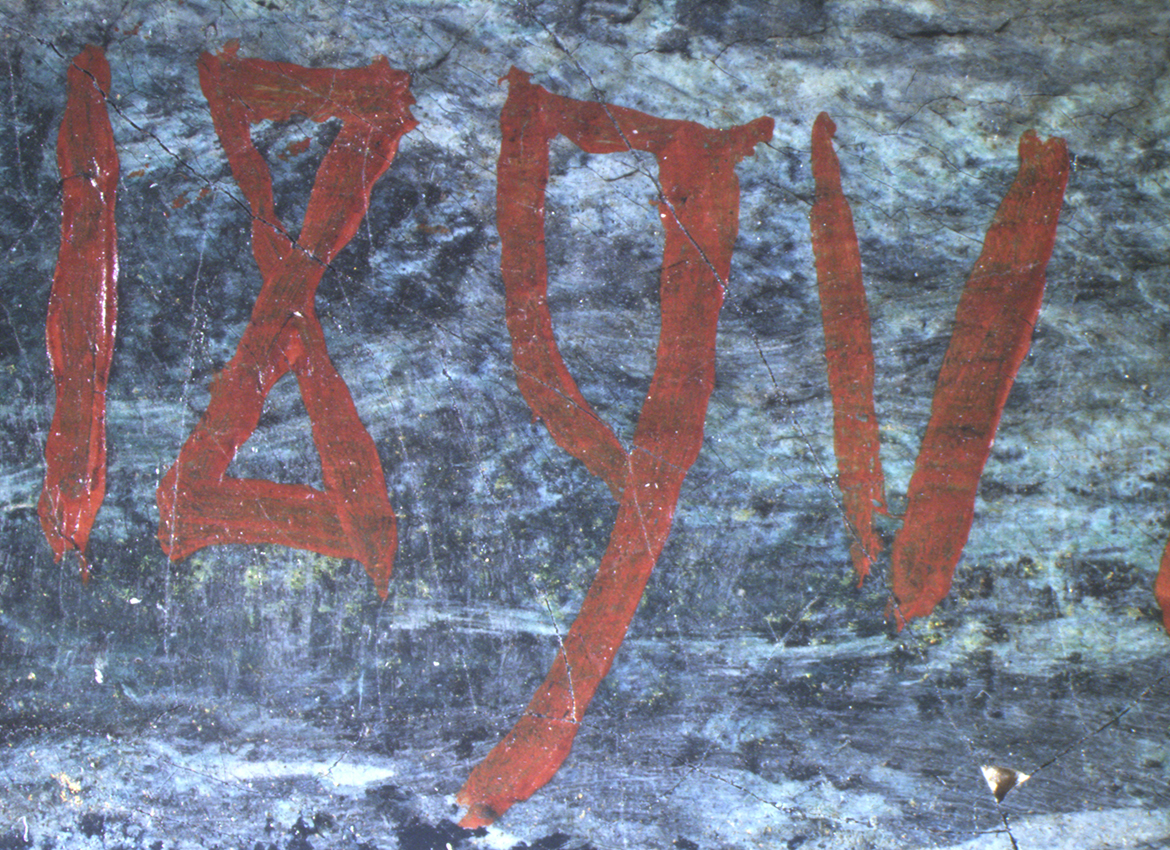
Examination by conservators at QAGOMA with infrared reflectography (IRR) reveals limited underdrawing through the layers of paint. This may be because the scene is painted on a black preparatory layer that could be obscuring the under-drawing. Begun in 1893 in his Brisbane studio 2, Jenner significantly reworked the composition in 1895, creating thicker paint layers which are less transparent to IRR. (illustrated).

The birds
A colony of flying seabirds with black tipped wings and black hooked beaks are evident in the painting, and there are also large groupings of standing birds — perched like bedraggled survivors — on rocks and icebergs dwarfed by the icy terrain. These birds at first appear penguin-like, standing upright with white chests, however penguins are not native to Canada and are only found in the Southern Hemisphere, concentrated on Antarctic coasts and sub-Antarctic islands.
These spectator birds have previously been described as Great Auks (Pinguinus impennis) (illustrated). The Great Auk is a large black-and-white penguin-like bird 75-85cm in length with short wings and a black hooked beak, however, by 1844 it had been hunted to extinction. Although the birds depicted in Cape Chudleigh, Coast of Labrador show physical and social similarities to the Great Auk, they were extinct by the time of the expedition and when Jenner sailed past in 1850.
Looking more closely at the birds with the aid of a stereo microscope, we can see that they are painted to include vivid red throats (detail illustrated) — a characteristic that is absent from the Great Auk. They appear more typical of the migratory aquatic bird, the Red Throated Loon (Gavia stellata) (illustrated). This Loon is a smaller bird than the Great Auk, measuring 55-67cm in length and is a typical inhabitant of the Arctic regions, wintering in the northern coastal waters.
Jenner’s birds have the Loon’s distinctive reddish throat patch, which becomes apparent during its summer mating season — this breeding plumage would thus place the depiction of the scene into the summer season. Some views of the birds show their speckled backs (detail illustrated), this characteristic inspiring the red throated loon’s Latin scientific name epithet ‘stellata’ meaning ‘set with stars’ or ‘starry’.
Vivid red throats characteristic of the Red Throated Loon
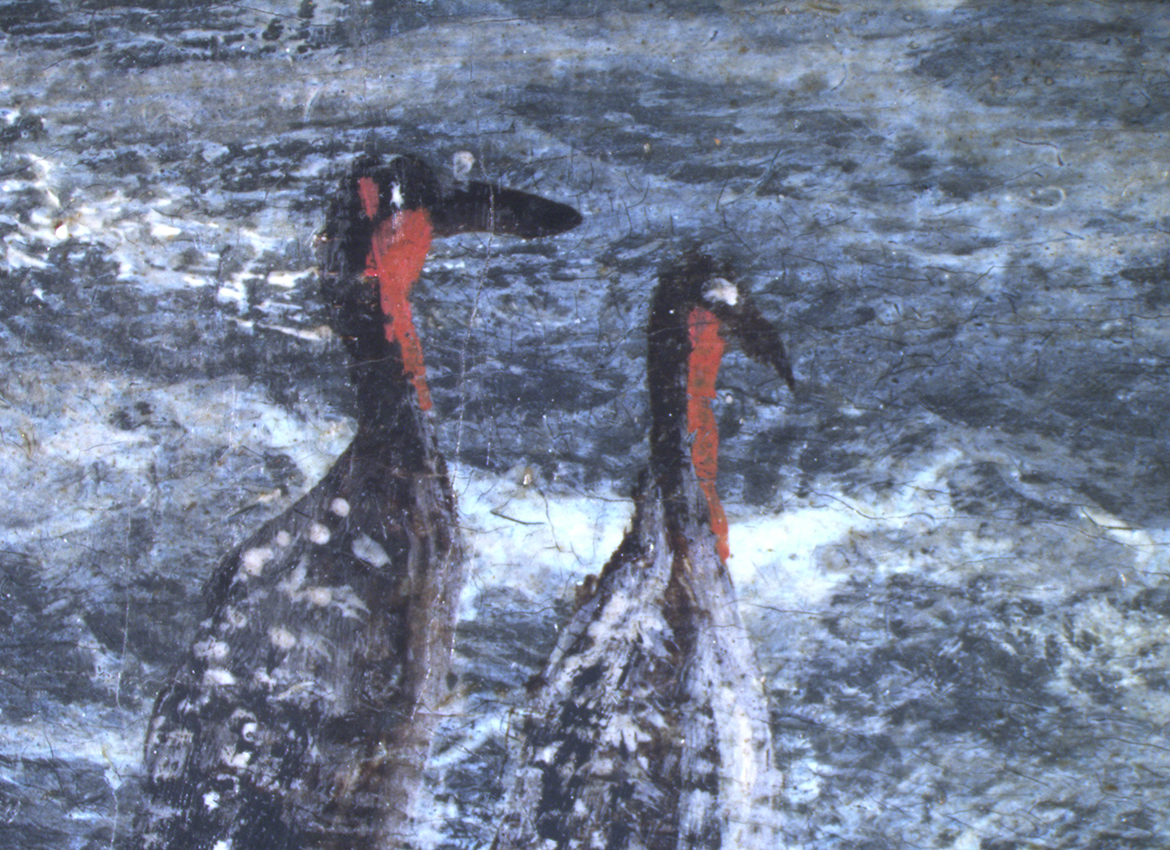
Great Auk (extinct), & Red Throated Loon
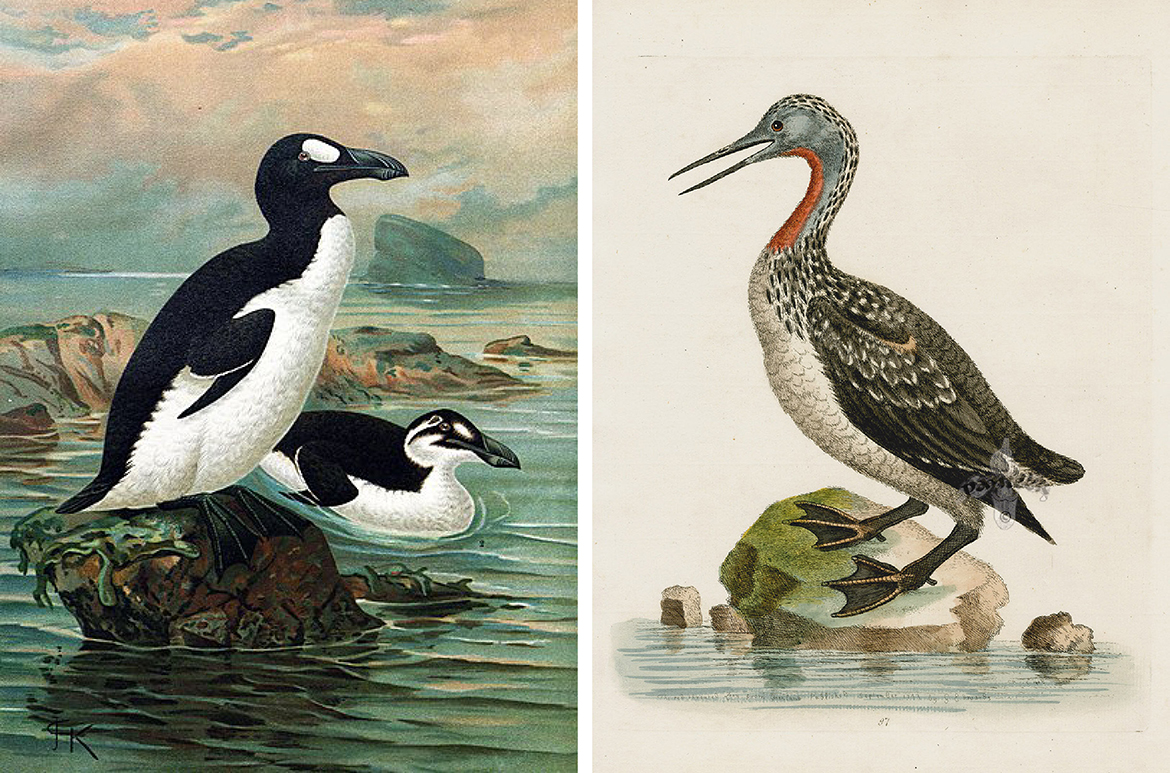
Mystery to be solved
There are some questions regarding the depiction of the various birds. The Red Throated Loons standing upright in groups on icebergs during its breeding season is one possible anomaly — perhaps the Loons in Cape Chudleigh, Coast of Labrador are drawn from awkwardly taxidermied museum specimens or historical prints? The Loon in its natural habitat is renowned for its inability to walk and its clumsiness on land, due to the position of its feet close to the back of its body.
Most modern depictions show the Red Throated Loon swimming or in the water, not perched on sea ice. The short wings depicted are also reminiscent of the Great Auk, rather than the larger wings of the Loon, though perhaps the birds have just started their late summer wing moult, which renders them unable to fly. Or perhaps Jenner used artistic licence and combined the characteristics of various birds.
What do you think? We also need help to identify some of the other birds depicted — those flying with a larger wing span with black tips, and smaller birds standing next to the Loons (details illustrated).
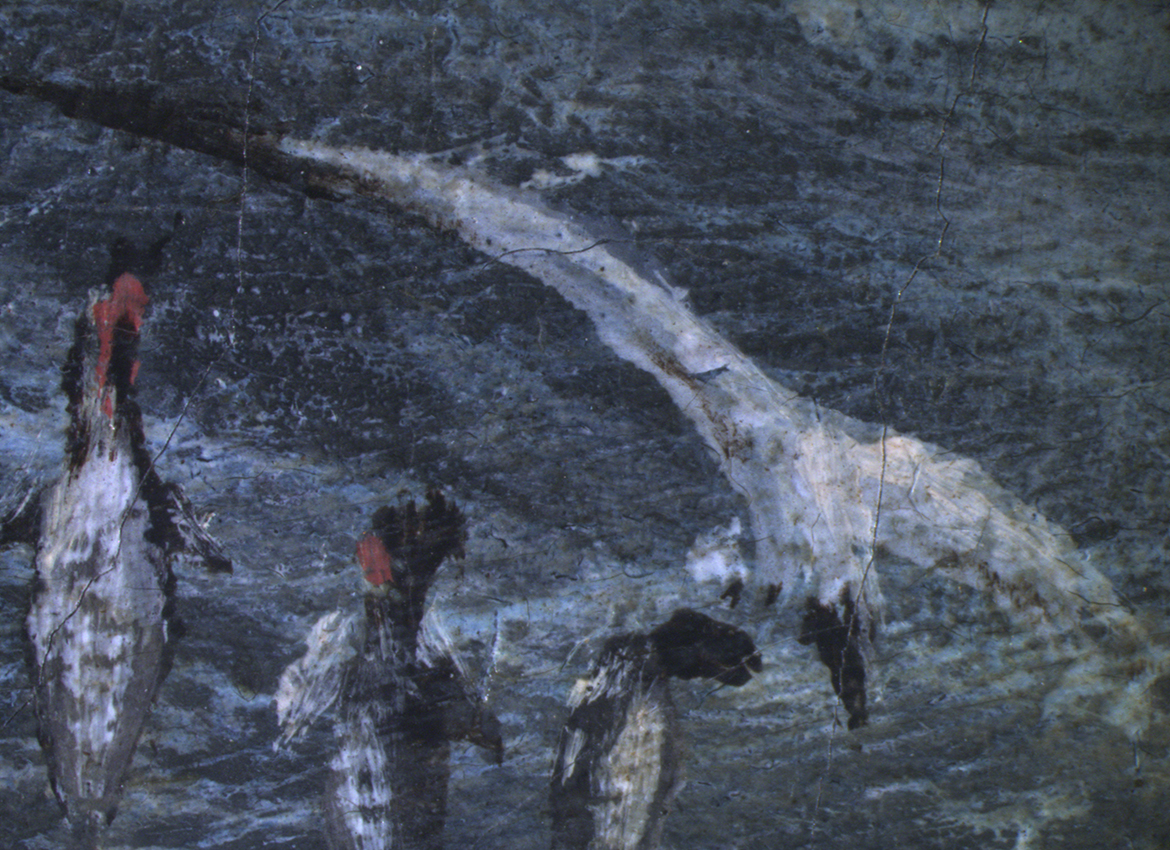
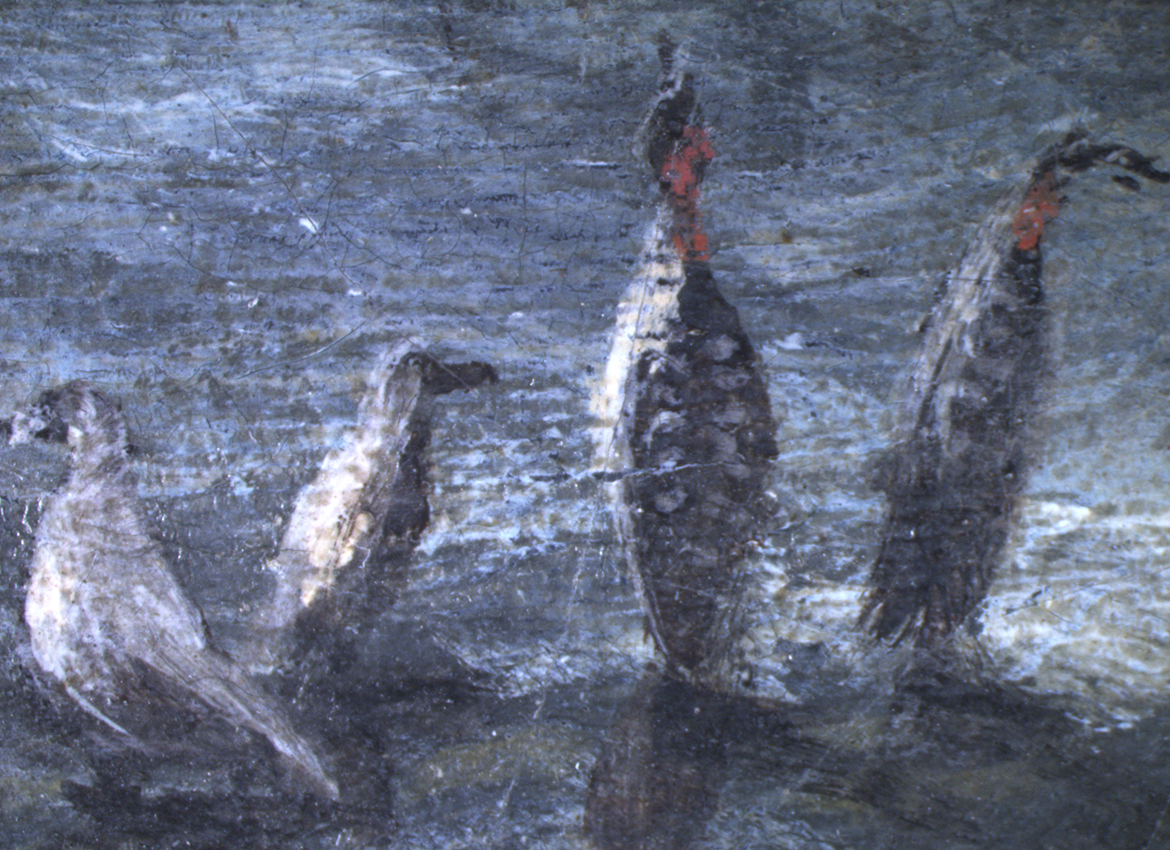
Anne Carter is Conservator, Paintings, QAGOMA
Additional research and supplementary material compiled by Elliott Murray, Senior Digital Marketing Officer, QAGOMA
Endnotes
1 From a diary entry written from Jenner held in QAGOMA Research Library (undated) : “As to my own career having had a spell at a host of different callings without making any headway, I put to sea in Oyster and crab ….. first then in a vessel bound for Lapland and Nova Zumbla getting blown to Spitzberger, coming home in the early fifties joined the navy was through the Crimean War in Black Sea and Baltic also at the Bombard – “
2 Isaac Walter Jenner’s Brisbane studio was at Montrose Road, Taringa from 1890 referenced in Margaret Maynard ‘Jenner Isaac Walter (1837–1902)’ Australian Dictionary of Biography, Australian National University, published first in hardcopy 1983. Online edition https://adb.anu.edu.au/biography/jenner-isaac-walter-6838 viewed 3/11/2023
#QAGOMA
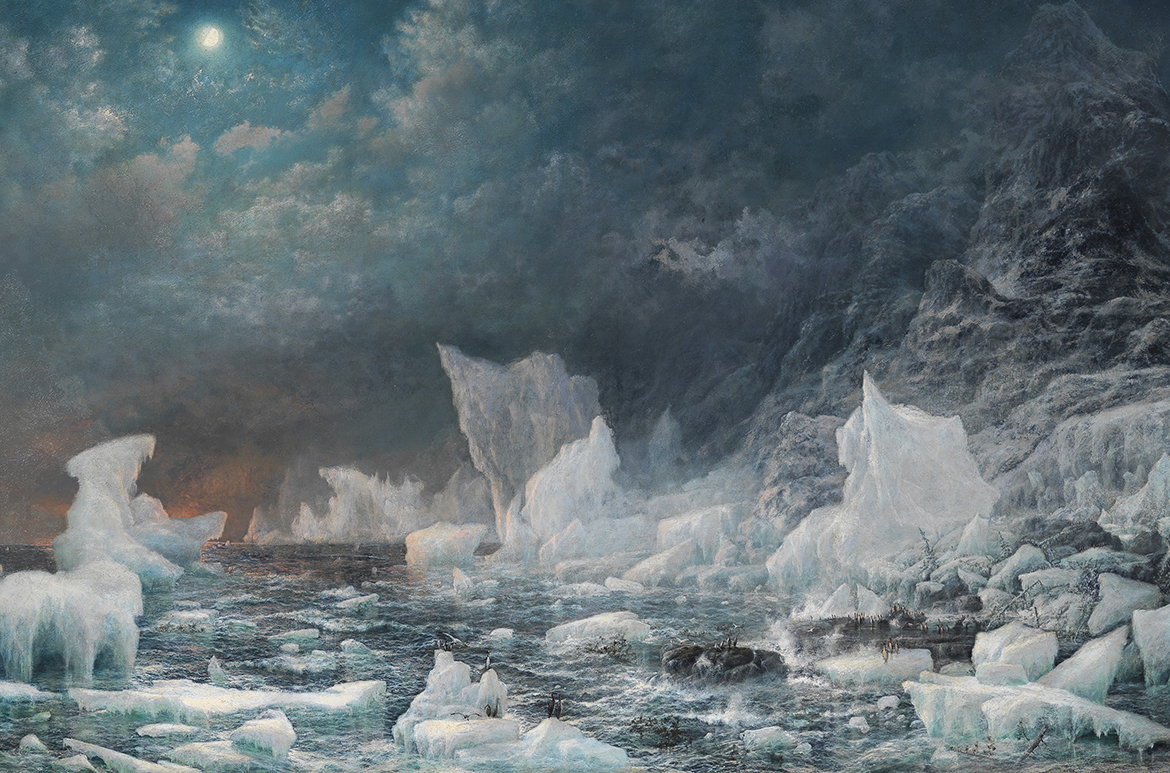
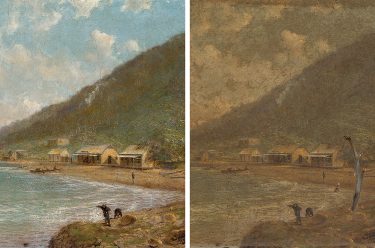

I found the story very interesting I enjoyed the stories and the paintings.